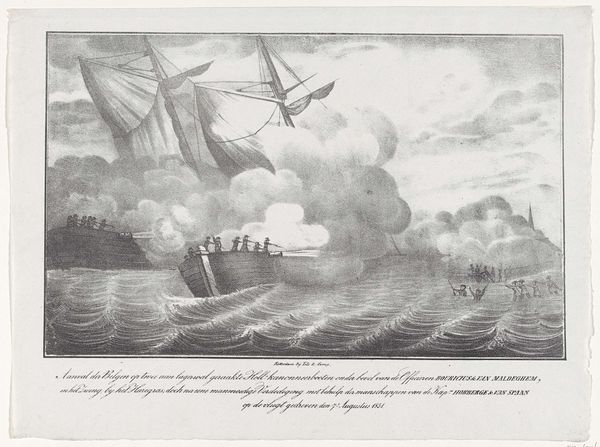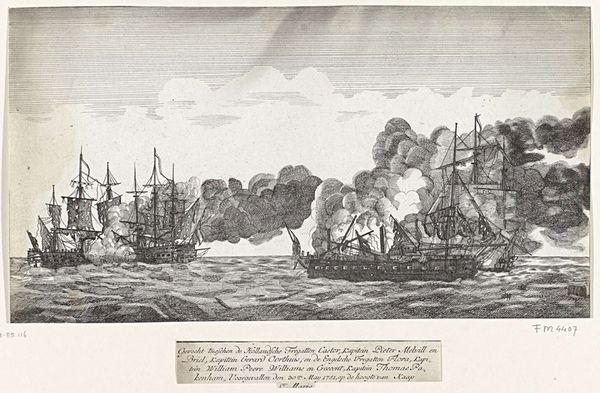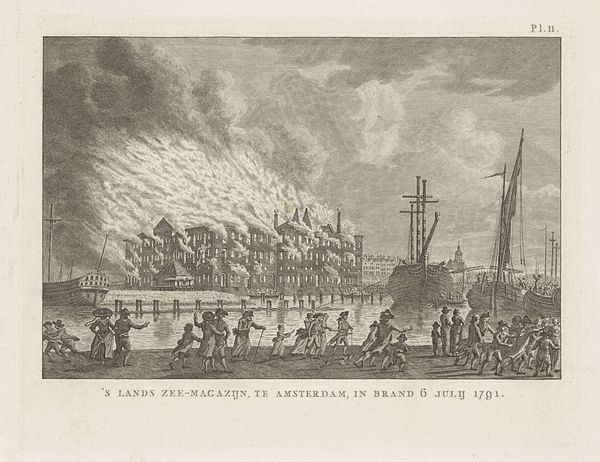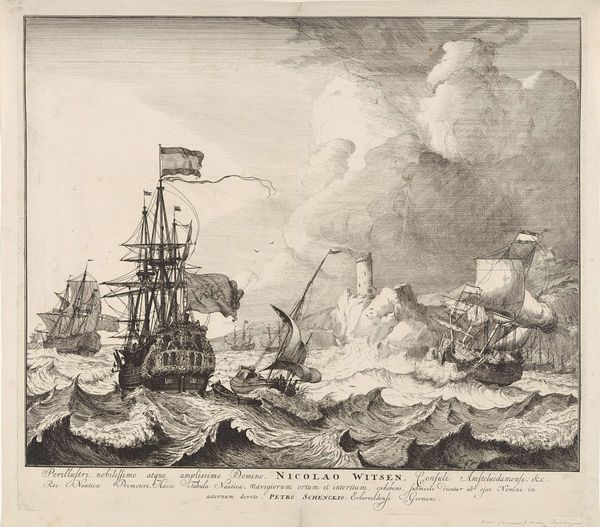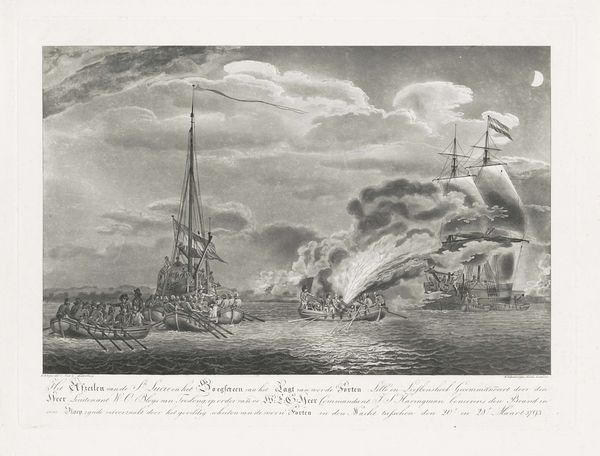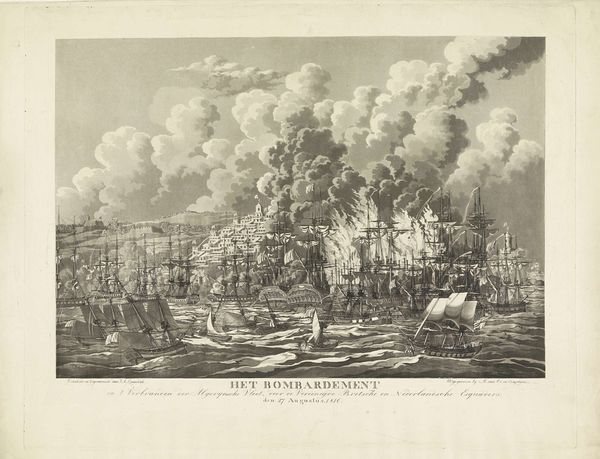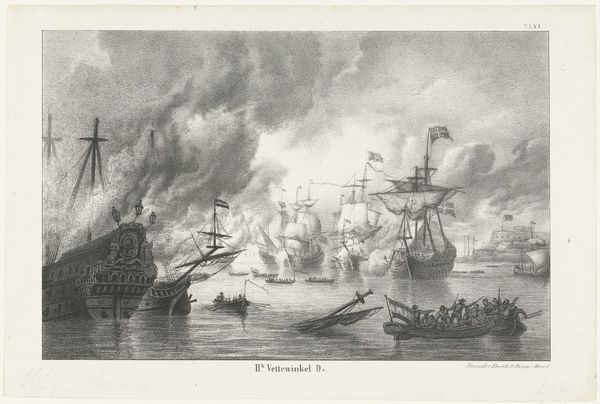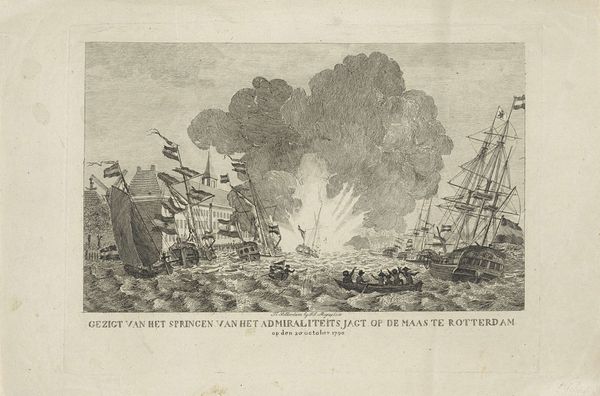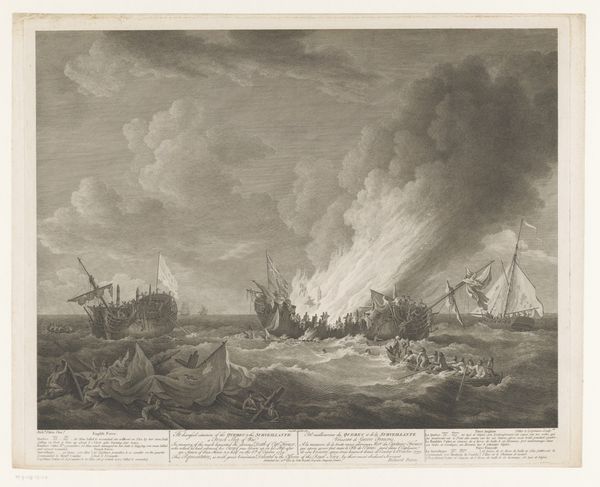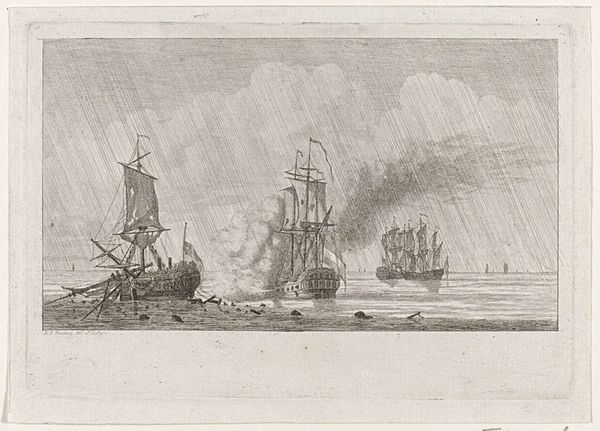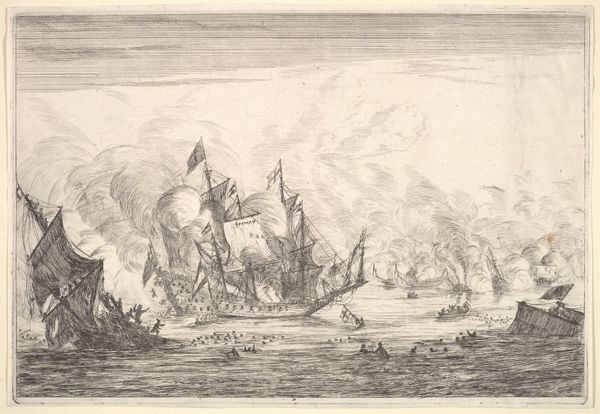
print, etching
#
narrative-art
# print
#
etching
#
old engraving style
#
landscape
#
history-painting
Dimensions: height 304 mm, width 230 mm
Copyright: Rijks Museum: Open Domain
Editor: This is "Ontploffing kanonneerboot van Jan van Speijk," an etching by Johannes Beunis, dating from somewhere between 1819 and 1880. It depicts a massive explosion on what appears to be a naval vessel. The level of detail, despite the relatively small scale, is quite striking. What visual metaphors or historical memories do you see in this dramatic image? Curator: This image certainly carries a potent emotional charge, doesn’t it? Etchings like these were often designed to communicate specific narratives and moral lessons. Consider the explosion itself: beyond the literal depiction of destruction, it’s a visual symbol of sacrifice and national pride. It freezes and elevates the single, cataclysmic instant into cultural memory. What do you notice about the people depicted? Editor: Some are falling, being thrown through the air. There are men on the pier too. They seem relatively safe. I guess that there were survivors on both sides of the conflict. What do you make of the overall composition? Curator: Notice how the artist contrasts the chaotic energy of the blast with the relative calm of the surrounding sea and distant ships. This juxtaposition enhances the drama, but also subtly speaks to the larger context – a single event, however violent, within the flow of history. It speaks to memory: can you guess who is memorialized, and whose suffering is less important in this scene? Editor: So it's about selective memory? This explosion becomes a symbol that might obscure more than it reveals. I hadn't considered that. Curator: Precisely! The power of such imagery lies in its ability to condense complex events into easily digestible symbols, but it's crucial to question what those symbols represent and whose stories they prioritize. History, even visually represented, is never truly neutral. Editor: This makes me see how seemingly straightforward depictions can be so layered with meaning and intent. Curator: Indeed. By examining the symbols, compositions, and the historical context, we can better understand the cultural narratives they perpetuate.
Comments
No comments
Be the first to comment and join the conversation on the ultimate creative platform.
